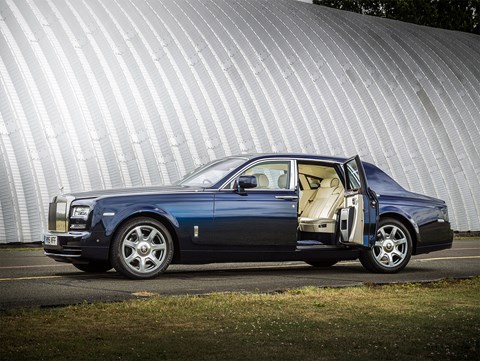► The definition of luxury
► Why the Phantom is so important
► Ben Oliver explains the R-R’s significance
In the twenty months between May 2001 and 1 January 2003, BMW transformed the British car industry with its comprehensive reimagining of three of our icons: the Mini, the Range Rover, and Rolls-Royce. These were just the launch dates, of course: BMW had been working on the Phantom and its new factory at Goodwood in secret since acquiring the name in 1998 (and Ford lucked into acquiring Land Rover from BMW just before the Range Rover was launched).
The new Mini and Range Rover would be of far greater significance, laying the foundation for the British car industry’s current production and export boom. But of these three reinventions, the Phantom was the most radical and free-thinking. It actually delivered everything that a Rolls-Royce should have had – peerless engineering, image, quality and refinement – but seldom did in darker days. I wrote the Phantom’s first road test: very few cars have ever felt as different to everything else that has gone before. But the Phantom’s success is best proven by time: it destroyed its only rival, the Maybach, and still feels as extraordinary to drive today.
BMW’s V12 was given the Rolls-Royce signature ‘six-and-three-quarter’ displacement, and an appropriate torque curve that delivers three-quarters of its peak 531lb ft of torque at just 1000rpm. Power was once only described as ‘sufficient’, but BMW owned up to 453bhp at launch, which accelerated the 2.5-tonne car as quickly as a contemporary Boxster.
Floats on air
The aluminium spaceframe wasn’t ground-breaking but BMW just do it very well, hand-welding over 200 sections to an error margin of less than 1mm over the car’s 6-metre length, adjusting tolerances daily to account for atmospheric conditions, and producing greater stiffness than an F1 car: vital for the accurate location of the air-sprung suspension that makes possible the finest ride of any car.

BMW managed to create from scratch at Goodwood the same culture of detail and quality that it took the great British bespoke tailors and gunsmiths centuries to acquire. A five-metre coachline takes three hours to paint with brushes made only of squirrel or ox hair. You can feel it when you drive: the leather in your hand and under your backside is soft and almost oily and comes only from Alpine bulls because their pastures have no barbed wire.
The Phantom made its ‘otherness’ apparent with a bunch of features you just won’t find anywhere else. The suicide rear doors feature Teflon-coated umbrellas which can be deployed instantly by your chauffeur. The wheel-centres bearing the Rolls-Royce logo spin separately and are weighted so that they are always upright, and the ‘starlight’ headliner uses 1600 fibre-optic lights and is best appreciated when you’re lying flat on your back across that elevated throne of a rear seat.
Presence
The Phantom’s design incorporated all of the cues you’d expect of a Rolls-Royce – the Pantheon grille, the long rear overhang, the 2:1 body-to-wheel height ratio of its towering standard 21-inch rims – and it bravely celebrated the fact that it was the biggest car on the road at launch by not seeking to disguise that fact. The looks weren’t universally well-received, but when you’re inside driving, and looking down that runway of a bonnet to the Spirit of Ecstasy, who cares?
The specs
Produced: 2003-present (current model)
Price: £252,037
Engine: 6749cc bi-turbo V12, 453bhp, 531lb ft
Performance: 6.0sec 0-60mph, 155mph